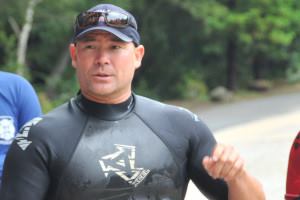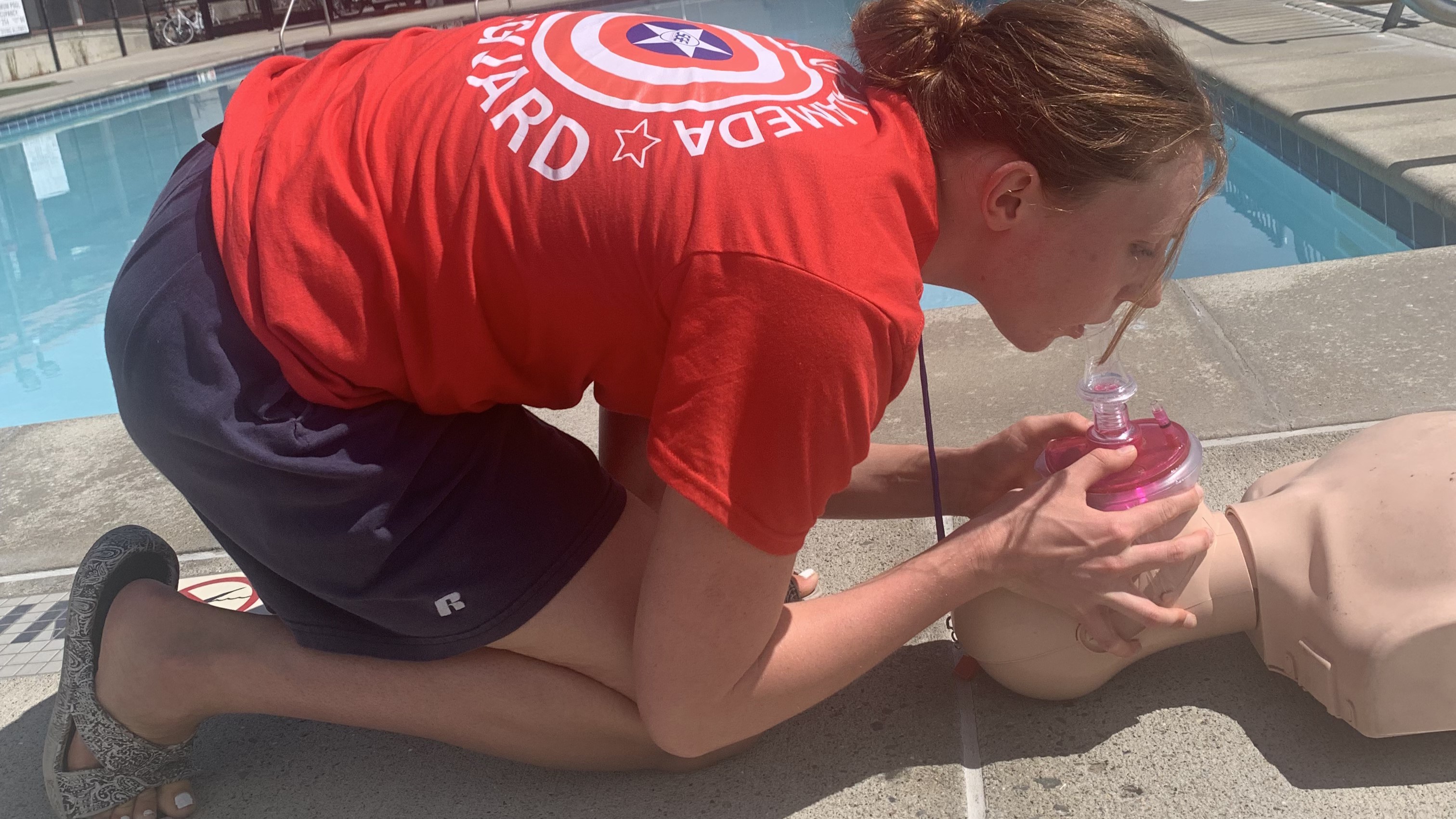Lifeguards, for the most part, sit or stand in the same place for prolonged periods of time, viewing the same view, having little or no conversation and limited mental stimuli. Then a sudden, immediate, physically demanding, mentally focused, rapid- action response is required. To initiate and sustain appropriate response patterns, lifeguards must overcome inertia, remember rescue sequences, engage optimum neuromuscular functioning and maintain psychological stability — all while operating in crisis mode.
We can train lifeguards how to sit and what to look for. We know how to train them in rescue techniques. But how do we train guards for making that transition between quiet, contemplative sitting and high-level physical, mental and psychological response?
Scenario training, as one method of bridging from individual skill training to actual rescue response, is well-known in lifeguard training programs. Scenarios are excellent training techniques, but they’re often predictable. Factors are controlled, and participants can stop and ask questions, rest when tired and repeat as needed. To be totally effective, response training activities also must contain components that are:
- Unpredictable — a situation that guards never thought could happen on their watch.
- Unending — an engagement demanding guards to continue high-level functioning beyond normal tolerance.
- Unanticipated — a circumstance requiring variance in technique to meet situational details.
- Unpleasant — a condition or situation that creates a withdraw, rather than approach, response.
Additionally, response training should, as closely as possible, simulate all of the conditions a lifeguard might face during a rescue. Transitioning from stillness to action is one of those inherent conditions, as are unpredictable situations, unending engagement, unanticipated circumstances and unpleasant conditions. Train for quick action by making these factors a part of your in-service training.
Here are two sample activities designed to enhance quick action response. In Speed Shuttle, participants must sustain high-level physical response over a prolonged period of time while performing jump, swim and climb out — all basic rescue skills (Unending). Continuing this drill also simulates making repeated rescues in a short period of time (Unpredictable).
In the No Space activity, lifeguards must perform a rescue skill in a very close environment where positioning and comfort during skill execution may not be what they have experienced in training (Unanticipated).
Maintaining the rescue skill while in an uncomfortable position, possible in spite of body cramping and/or bruising, could make participants want to end the activity more quickly than appropriate (Unpleasant).
Speed Shuttle
Swimmers line up on deck along the deep-end side of the pool, facing the opposite deep-end side (do not swim toward the shallow end). After a two-count start, swimmers stride/jump into the water, approach stroke to the opposite side, climb out of the pool, and assume a ready position for another stride/jump.
While swimmers swim, the start leader very loudly counts five counts. Swimmers must complete the swim and be ready to jump again in five seconds (time may be adjusted for larger pools). After the five-second count, the leader again, without waiting for participants to be ready, gives a two-count start and swimmers jump and return to their starting points, again swimming in five seconds, climbing out and assuming a ready position.
This cycle then repeats. Each time swimmers make it in five seconds and are ready to jump, they receive one point. If swimmers are not ready to jump, no point is given and they must wait on deck at the side where they last climbed out, until the line of swimmers returns to their side of the pool. Then they re-enter the game.
Remember, swimmers should not be jumping from both sides of the pool at the same time. As swimmers tire, they will miss a round or two. That’s all right. They should get back into the game as soon as the line comes to their side of the pool. It’s total points that count.
For variation, specify the particular stroke used. Add an additional skill or stunt to the swim pattern. For example, jump, swim to the second line, feet-first surface dive and touch bottom, surface, continue to swim, climb out. Of course, if an additional challenge is added, counted time must be adjusted. Perform the Speed Shuttle with rescue tubes. Do the Speed Shuttle wearing clothing.
No Space
For this activity, you’ll need one CPR manikin for each participant as well as different types of furniture, such as a small table, bench, chairs, desks and the like. No Space is a rescue simulation that takes place where there is, literally, no space and no practice floor padding.
The CPR manikin is placed in a confined location. This might be under a table, between a chair and the wall, or surrounded by furniture. Then enact a scenario involving the participant responding to that manikin/victim in that specific confined location.
Examples might include someone who:
- Collapses in the pool office.
- Chokes while eating at a poolside picnic table.
- Passes out while dressing in the locker room and/or lavatory.
- Falls while going out to his or her car.
For variation, change the number of by-standers available to assist so that sometimes it will be possible to move furniture out of the way and other times it will not. Vary size of the manikin — adult, child and infant. Vary the equipment available to the participant. For example, lifeguards leaving work and finding someone collapsed and unconscious on the parking lot may not have their fanny pack with personal protective equipment. How would they improvise?


